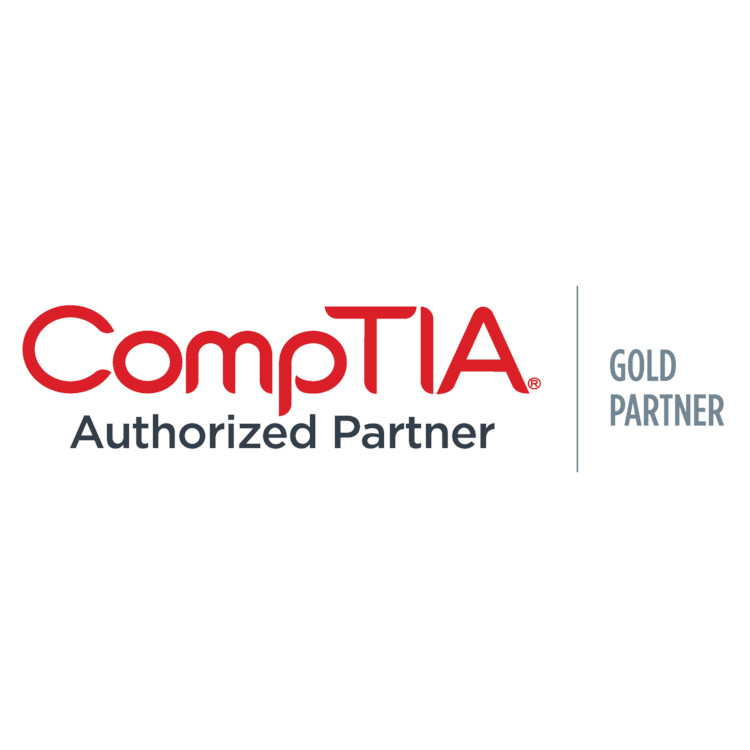Type
Virtual
Classroom ILT
Skill Level
Available dates
Learning Path
Virtual
Duration
1 Day

TYPE
Virtual
Classroom ILT
LEARNING PATH
SKILL LEVEL
DURATION
AVAILABLE DATES
Choose date
R7 300,00
Price excluding VAT
Introduction
CompTIA Data+ is an early-career data analytics certification for professionals tasked with developing and promoting data-driven business decision-making. Data+ is an ideal certification for not only data-specific careers but other career paths outside of IT can also benefit from analytics processes and data analytics knowledge.
CompTIA Data+ gives your team members the confidence to bring data analysis to life. As the importance for data analytics grows, more job roles are required to set context and better communicate vital business intelligence. Collecting, analysing, and reporting on data can drive your organization’s priorities and lead business decision-making.
CompTIA Data+ is the only data analyst certification that covers baseline data analytics skills, assesses hands-on abilities and is vendor neutral. Vendor-neutral certifications provide analyst skills needed to perform various job roles regardless of the specific programs and tools being used. Compare this to vendor-specific certifications, which equip your team to work with just one platform (such as SAS, Tableau, or Microsoft).
Audience profile
Anyone working in a role that analyses business-specific data, provides management with data analytics on business functions, or analyses and monitors dashboards, results and trends can benefit from becoming CompTIA Data+ certified. Its value extends well beyond the IT team to employees in finance, marketing, manufacturing, operations, sales and other departments tasked with data responsibilities.
Individuals who are early career and career- transitioning individuals who may specialise in core business function, have hands-on experience with Data Analytics software (e.g., PowerBI, Tableau) or those who want responsibility for using data to illustrate business operations or performance.
Pre-requisites
CompTIA recommends 18–24 months of experience in a report/business analyst job role, exposure to databases and analytical tools, a basic understanding of statistics, and data visualization experience.
Course objectives
This certification validates that certified professionals have the skills required to facilitate data-driven business decisions, including the knowledge and skills required to transform business requirements in support of data-driven decisions by mining data, manipulating data, applying basic statistical methods, and analysing complex data sets while adhering to governance and quality standards throughout the entire data lifecycle.
After completing the CompTIA Data+ course, delegates will have the skills and knowledge to:
- Identify basic concepts of data schemas and understand the difference between common data structures and file formats
- Explain data acquisition concepts, reasons for cleansing and profiling, and techniques for data manipulation
- Apply the appropriate descriptive statistical methods and summarise types of analysis
- Translate business requirements to form the appropriate visualization
- Summarise important data governance concepts and apply data quality control concepts
Course content
| Lesson 1: Identifying Basic Concepts of Data Schemas | |
|
|
| Lesson 2: Understanding Different Data Systems | |
|
|
| Lesson 3: Understanding Types and Characteristics of Data | |
|
|
| Lesson 4: Comparing and Contrasting Different Data Structures, Formats, and Markup Languages | |
|
|
|
|
| Lesson 5: Explaining Data Integration and Collection Methods | |
|
|
|
|
| Lesson 6: Identifying Common Reasons for Cleansing and Profiling Data | |
|
|
|
|
|
|
| Lesson 7: Executing Different Data Manipulation Techniques | |
|
|
|
|
| Lesson 8: Explaining Common Techniques for Data Manipulation and Optimization | |
|
|
| Lesson 9: Applying Descriptive Statistical Methods | |
|
|
|
|
| Lesson 10: Describing Key Analysis Techniques | |
|
|
| Lesson 11: Understanding the Use of Different Statistical Methods | |
|
|
|
|
| Lesson 12: Using the Appropriate Type of Visualization | |
|
|
|
|
| Lesson 13: Expressing Business Requirements in a Report Format | |
|
|
|
|
|
|
| Lesson 14: Designing Components for Reports and Dashboards | |
|
|
|
|
| Lesson 15: Distinguishing Different Report Types | |
|
|
| Lesson 16: Summarizing the Importance of Data Governance | |
|
|
|
|
| Lesson 17: Applying Quality Control to Data | |
|
|
| Lesson 18: Explaining Master Data Management Concepts | |
|
|
Associated certifications and exam
This course will prepare delegates to write the CompTIA Data+ (DA0-001) exam.
Successfully passing this exam counts as a credit to attaining the Official CompTIA Data+ certification.
The CompTIA Data+ exam will certify the successful candidate has the knowledge and skills required to transform business requirements in support of data-driven decisions through mining and manipulating data, applying basic statistical methods, and analysing complex datasets while adhering to governance and quality standards throughout the entire data life cycle.
| Exam Details | CompTIA Data+ |
| Exam Title | CompTIA Data+ |
| Number of Questions/Practical Challenges | 90 Questions |
| Recommended Experience | CompTIA recommends 18–24 months of experience in a report/business analyst job role, exposure to databases and analytical tools, a basic understanding of statistics, and data visualization experience |
| Test Duration | 1 Hour 30 Minutes |
| Test Format | Multiple choice questions and performance-based questions. |
| Test Delivery | Pearson VUE
Testing Centres Online Testing |
| Availability | Pearson VUE |
| Exam Prefix | DA0-001 |
| Passing Score | 675 (on a scale of 100-900) |
| Retirement | Three years after date of launch. |

CompTIA Overview
Torque IT, an established player in the CompTIA arena.
Torque IT offers comprehensive CompTIA training paths that form a foundation for a career in computer technology, which allows for the pursuit of specific areas of specialisation. Depending on the path chosen, Torque IT CompTIA vendor neutral certifications assist Students in building skills and knowledge, supporting learning throughout their entire IT career.

